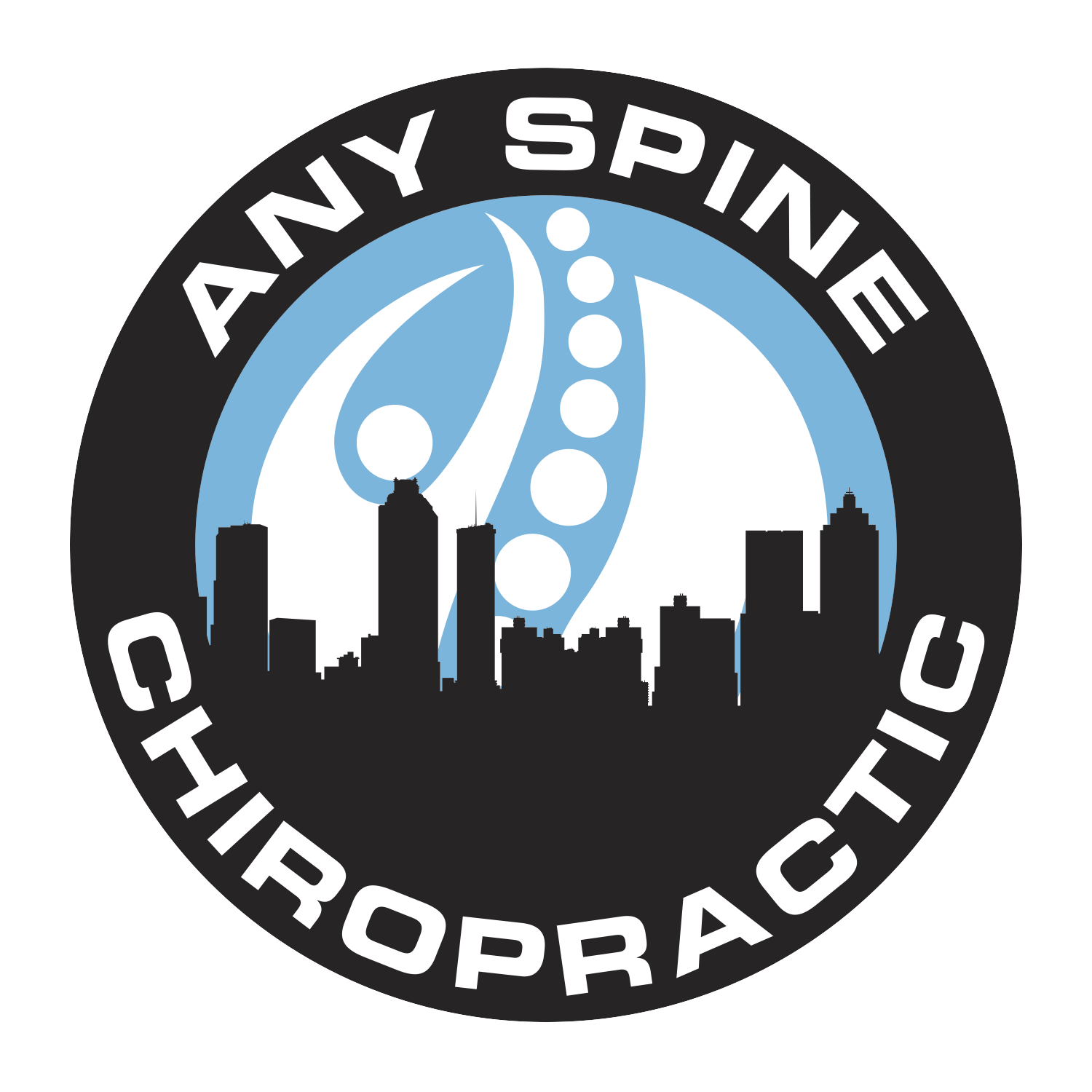Chiropractor vs. Physical Therapist: Choosing the Best Care
When deciding who to turn to for injury recovery and pain relief—be it a chiropractor or a physical therapist—the choice can significantly influence your path to wellness. This article will illuminate the distinct roles chiropractors and physical therapists play, focusing on key differences and the range of conditions each professional typically addresses. For those of you in Atlanta battling the discomfort of personal injury or chronic pain, understanding how chiropractic care aligns with holistic health can lead to a more effective treatment plan. Dive into this read to uncover how the hands-on approach at Any Spine Chiropractic & Massage Studio could be the answer you’ve been searching for.
Key Takeaways
- Chiropractic care focuses on spinal adjustments to align the body and promote natural healing
- Physical therapists specialize in tailored rehabilitative exercises to improve mobility and strength
- Chiropractors and physical therapists can work together for comprehensive, multidisciplinary patient care
- Understanding personal health goals helps determine whether chiropractic care or physical therapy is suitable
Understanding the Roles of Chiropractors and Physical Therapists
When facing discomfort or injury, it’s crucial to know whether the “best chiropractor near me” or a physical therapist in Atlanta will serve your health needs more effectively. I do more than adjust backs; as a chiropractor, I weave comprehensive patient care, targeting the root of pain and enhancing movement. Physical therapists also play a pivotal role by guiding patients through rehabilitation to regain function. While both professions share a commitment to your well-being, the educational paths and techniques used can differ significantly. In the following sections, we’ll look closely at what sets these valuable health care providers apart.
Explore What Chiropractors Do in Patient Care
In my daily practice, I encounter many individuals seeking relief from back pain who might be contemplating chiropractic or physical therapy. What I offer as a chiropractor extends beyond the immediate relief of pain; I provide spinal adjustments that aim to realign the vertebral column, restoring proper function and movement to your body. Combined with methods like massage therapy, my goal is to holistically treat musculoskeletal issues, which often originate from spinal misalignments. As your chiropractor, I’m committed to not just alleviating symptoms but also preventing recurrence by addressing the underlying causes of your discomfort.
Learn How Physical Therapists Assist in Rehabilitation
On the flip side, when it comes to rehabilitation, physical therapists excel in creating tailored recovery programs to regain functionality, especially after injuries or surgeries. In my own experience, patients with neck pain or headaches often find complementary benefits in physical therapy, where the focus is on pain management strategies and exercises that improve mobility. Their work, unlike the spinal manipulation techniques I apply, concentrates on methodically rebuilding strength and flexibility across affected areas. This form of therapy is particularly beneficial for those recovering from events like strokes or sports injuries, as it helps retrain the body to function optimally again.
Compare the Education and Training Required for Each
In choosing between chiropractic care and physical therapy, it’s essential to understand the distinct educational paths that underpin our expertise in movements and manual therapy. Chiropractic education typically includes an intensive course of study involving anatomy, physiology, nutrition, and pathology, with a strong emphasis on spinal and joint manipulation techniques. Our clinical experience is geared towards mastering these skills and applying alternative medicine principles that promote the body’s innate ability to heal. As someone who has undergone rigorous training and testing, I am well-equipped to assess and address your health needs, particularly if they stem from spinal misalignments or the aftermath of an accident. With this knowledge, you can make an informed decision on which approach may better suit your well-being journey.
We’ve looked at the roles. Now let’s grasp the differences that set chiropractors and therapists apart.
Key Differences Between Chiropractic and Physical Therapy
Choosing between a chiropractor and a physical therapist in Atlanta hinges on differentiating their approaches to promoting healing and managing pain. In my practice, I draw upon specialized training that encompasses postgraduate education to understand diseases impacting nerves, while adeptly handling injuries like a slip and fall. Chiropractic care primarily involves correcting alignment to relieve nerve pressure and improve function, focusing on spinal adjustments and soft tissue therapy. Physical therapists, on the other hand, employ a variety of therapeutic methods to rehabilitate and enhance mobility. Up next, we’ll examine the philosophies, treatment techniques, and therapeutic methods prevalent in both fields to empower you in making an informed health care choice.
Examine the Philosophies Behind Each Practice
Within my chiropractic practice, the philosophy centers on the belief that the body’s structure, especially the spine, and its function are intricately connected. This principle leads me to address the underlying issues that may contribute to chronic pain, such as sciatica or repetitive sports injuries, through spinal alignments and muscle adjustments. In contrast, the philosophy guiding physical therapists involves designing personalized exercise programs that support recovery and mitigate pain, including in cases of migraines or acute injuries. My expertise allows me to blend holistic techniques with targeted exercises, offering a comprehensive approach to your musculoskeletal health.
Identify Treatment Techniques Used by Chiropractors
In my chiropractic clinic, a core treatment technique I use focuses on enhancing range of motion and relieving pain caused by conditions like whiplash. Honing in on the attention to joint health, I employ adjustments that are crucial in correcting alignments and promoting recovery. Such precise maneuvers are designed to reduce discomfort and improve bodily functions, which in turn supports my patients’ journeys back to their preferred activities without the hindrance of pain. For more details on how we enhance flexibility and promote recovery, visit our website.
Discover Therapeutic Methods Employed by Physical Therapists
In my experience working with patients, I’ve seen how physical therapists integrate diverse therapeutic methods to rehabilitate tissue damage and enhance quality of life. They often address vertebral subluxation indirectly through exercises that strengthen surrounding muscles, aiding the nervous system in its recovery. For someone with a compromised shoulder, a physical therapist meticulously works to restore strength and mobility through a series of targeted exercises, ensuring each movement promotes healing and reduces the risk of further injury. Shoulder mobility exercises are a key part of this rehabilitation process.
Understanding the differences gives clarity. Now, let’s see how each method tackles specific ailments, guiding your choice for optimal health. For more details on chiropractic approaches, you might find this overview on understanding chiropractic back cracking insightful.
Conditions Treated by Chiropractors vs. Physical Therapists
Deciding on whether a chiropractor or physical therapist is best for you hinges on understanding the conditions each discipline commonly treats. From my practice, I see a variety of injuries, such as stress-related tension, low back pain, radiculopathy, and sprains, which often respond well to chiropractic methods. Contrastingly, physical therapists tend to excel with certain rehabilitative conditions. While there is an overlap where collaborative care is beneficial, recognizing the distinctive treatments offered under each specialty will guide you towards the most effective path for your recovery.
Find Out Which Injuries Chiropractors Commonly Address
In my chiropractic clinic here in Georgia, I frequently address injuries like carpal tunnel syndrome, where patients experience numbness and tingling in their hands or arms, often linked to nerve pressure. Utilizing techniques such as electrical muscle stimulation, I work to alleviate chronic pain and restore function to the affected areas, offering brain-friendly solutions that focus on holistic recovery. This hands-on approach empowers my patients, guiding them through the healing process and helping them achieve long-term resiliency against recurrent discomfort.
Understand Conditions Best Managed by Physical Therapists
Physical therapists have their niche, especially when it comes to post-surgery rehabilitation or specific neurology-related conditions. If you’ve recently had a hip replacement or are recovering from a car accident, a physical therapist’s regime can be instrumental. By combining osteopathy principles with rehabilitative exercises, they proficiently restore your ability to perform daily activities. Their treatment focuses on mitigating pain and enhancing mobility, ensuring that your recovery is as swift and complete as possible.
Recognize Overlapping Areas and Collaborative Care Opportunities
Through my years of expertise in the Atlanta chiropractic scene, I’ve found that the spheres of chiropractors and physical therapists often intersect, particularly when managing chronic conditions and injuries. This convergence cultivates opportunities for collaborative care, where I work alongside physical therapists to blend adjustments with rehabilitative exercise, thereby forming a coherent, multidisciplinary approach to medicine. Such partnerships are vital for patients seeking a comprehensive recovery plan, ensuring they receive the best of both worlds—expert manipulative therapies from chiropractors and expertly crafted rehabilitation programs from physical therapists.
Navigating the choice between a chiropractor and a physical therapist stems from your unique situation. Consider your pain, your goals, and then choose wisely. For further details, you might find this article interesting: how natural healing doctors and chiropractors enhance your wellness journey.
How to Choose the Right Professional for Your Needs
Choosing between chiropractic care and physical therapy hinges on accurately assessing your symptoms and health goals. As a chiropractor, my approach involves spinal adjustments to release tension and restore alignment, whereas physical therapists may focus on exercises post-medical diagnosis. It’s paramount to consider insurance coverage and costs, as well as to seek advice from medical professionals who understand your unique situation. In the following content, I’ll delve into how to evaluate your condition and goals, navigate financial aspects of care, and the importance of professional guidance to make the most informed decision for your well-being.
Assess Your Symptoms and Health Goals
When struggling with an achy elbow or persistent hip pain, it’s crucial to reflect on both the specifics of your discomfort and your end goals for recovery. As an Atlanta chiropractor committed to enhancing motion and well-being, I advise you to observe whether pain impedes your daily functions or if mobility is your primary concern. Understanding these nuances guides you toward the healthcare choice that aligns best with your needs, be it the hands-on adjustments provided by a chiropractor or the structured rehabilitation from a physical therapist. Consider, too, the long-term wellness trajectory you envision; this clarity is vital in selecting a care path that fosters the fullest return to health.
Benefits of Chiropractic Care and Physical Therapy
As we delve into the advantages of chiropractic care and physical therapy, it’s vital to highlight the unique benefits that each brings to your health journey. Discover how spinal adjustments not only address ailments like scoliosis but also contribute significantly to pain management and overall accessibility to better health care. Concurrently, learn about physical therapy’s role in enhancing mobility, particularly after an injury or a condition like carpal tunnel syndrome. Both approaches are foundational to our primary care offerings and indispensable in maintaining your body’s optimal functionality.
Discover the Benefits of Spinal Adjustments
Passing the national board of chiropractic examiners, my academic journey combined rigorous science education with specialized training, including techniques like acupuncture. This undergraduate education empowers me to perform spinal adjustments proficiently, providing my patients with relief from various ailments linked to bone and joint dysfunction. These adjustments not only alleviate pain but also encourage the body’s natural healing processes, offering a science-backed approach to improving overall musculoskeletal health.
Learn How Physical Therapy Enhances Mobility
My experience has shown that skilled physical therapy is transformative for mobility. A comprehensive physical examination allows therapists to identify pressure points and root causes of immobility, developing personalized interventions that reduce the risk of further injury while coaxing the central nervous system towards optimal function. It’s a nuanced craft, where the intricate balance of the body is restored through guided movement, offering patients a pathway back to an active and enriched lifestyle.
Explore the Role of Each in Pain Management
In managing pain, the tools and expertise I employ as a chiropractor can be profoundly effective, particularly for conditions such as arthritis and pelvis misalignments. Spinal adjustments and manipulations, coupled with modalities like ultrasound, target the physiology of pain by alleviating strain and enhancing joint function. This focus on the root cause often provides not only symptomatic relief but also long-term management strategies tailored to each patient’s unique anatomical needs.
Chiropractic care works; it aligns your body and unmasks potential. Imagine the power of combining that alignment with the dedicated rehabilitation of physical therapy. For more details on this integration, you might be interested in massage and chiropractor combined care.
Combining Chiropractic and Physical Therapy for Optimal Recovery
Finding the delicate balance between chiropractic care and physical therapy can catalyze your journey to recovery. By understanding how integrated treatment plans work, you’ll appreciate the harmony of chiropractic techniques, like myofascial release, with physical therapy’s systematic approach to anatomy and inflammation. The collaborative care approaches we’ll explore show how combining complementary modalities offers broader benefits for conditions such as subluxation that disturb sleep patterns. Plus, I’ll share tips on effectively coordinating care between chiropractors and physical therapists, ensuring a smooth and synergistic recovery experience.
Understand How Integrated Treatment Plans Work
In my practice at Any Spine Chiropractic & Massage Studio, we’ve seen the positive effects of integrated treatment plans, combining chiropractic care, such as cupping therapy, with the structured rehabilitation techniques used in physical therapy. For patients grappling with conditions like osteoarthritis, piriformis syndrome, or iliotibial band syndrome, this harmonized approach enhances pain management, supporting the body’s natural healing mechanisms. By incorporating both passive and active modalities, we are able to address the diverse needs of our patients, providing a rounded strategy for recovery and long-term well-being.
Learn About Collaborative Care Approaches
In our pursuit of integrated healthcare tailored to an active lifestyle, we’ve developed collaborative care approaches that marry the benefits of both chiropractic adjustments and physical therapy. For instance, by incorporating custom foot orthotics from my chiropractic expertise, combined with knee pain mitigation strategies devised by physical therapists, patients experience relief that extends from the foot all the way up to the arm and spine, optimizing posture and mobility. This holistic model of care ensures that every aspect of your well-being is addressed, giving you the tools to thrive in daily life.
Get Tips on Coordinating Care Between Specialists
Coordinating care between chiropractic and physical therapy professionals can significantly improve your recovery from stiffness and enhance overall well-being. To facilitate this, it’s crucial to Book Your Appointment with Our Chiropractic Services, where we can create a detailed, compatible treatment plan that synergizes with Massage Therapy Services. I’ll help navigate the logistics, ensuring that your care is continuous and that both your chiropractor and physical therapist are aligned in their approach to your health, offering a seamless and effective experience.
Frequently Asked Questions
What specific conditions do chiropractors treat?
Chiropractors effectively address lower back pain, neck pain, headaches, and musculoskeletal issues with non-invasive methods to improve body function and mobility.
How does chiropractic care differ from physical therapy?
Chiropractic care focuses on diagnosing and treating musculoskeletal disorders, primarily through spinal adjustments, to restore proper alignment and nerve function, whereas physical therapy emphasizes rehabilitation and movement exercises to improve mobility and strength. Chiropractic care focuses on diagnosing and treating musculoskeletal disorders, primarily through spinal adjustments, to restore proper alignment and nerve function, whereas physical therapy emphasizes rehabilitation and movement exercises to improve mobility and strength.
Can chiropractic adjustments help with pain relief?
Absolutely, chiropractic adjustments are effective in providing pain relief, especially for back, neck, and joint discomfort by improving alignment and promoting natural healing.
When should someone consider visiting a chiropractor?
Consider chiropractic care when experiencing persistent back pain, joint discomfort, or muscle tension, or after sustaining sports injuries and wanting to enhance overall bodily function and wellness.
Is it beneficial to combine chiropractic care with physical therapy?
Combining chiropractic care with physical therapy can enhance recovery, improve functionality, and promote overall musculoskeletal health, offering a comprehensive approach to wellness and rehabilitation.
Conclusion
When choosing between chiropractic care and physical therapy in Atlanta, consider the distinctive treatment approaches and the conditions they best address for your specific health needs. Chiropractors like myself focus on spinal adjustments and holistic methods to alleviate pain at its source, promoting natural healing and preventing future issues. On the other hand, physical therapists excel in rehabilitation exercises that improve mobility and strengthen the body post-injury. Your decision should align with your health objectives and be informed by professional consultations, ensuring a pathway to optimal recovery and lasting well-being.





